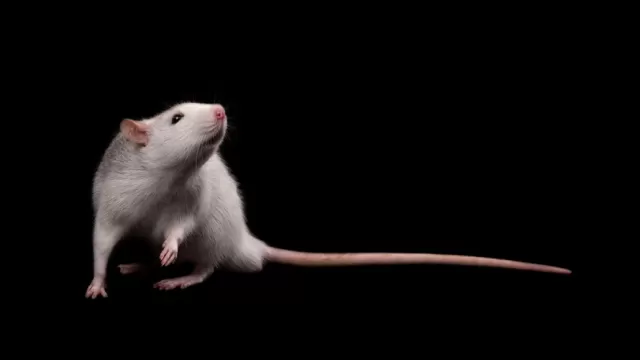Rats Exhibit Astonishing Imagination: Insights into Brain's Capacity for Mental Time Travel
Nov 02, 2023
Much like small, furry Yodas defying gravity to lift X-wings from swampy depths using the Force, rats have astounded researchers by displaying a remarkable ability to manipulate digital cubes through their imagination.

Much like small, furry Yodas defying gravity to lift X-wings from swampy depths using the Force, rats have astounded researchers by displaying a remarkable ability to manipulate digital cubes through their imagination. This groundbreaking study, published in Science on November 3rd, sheds light on the brain's capacity to construct new scenarios and retrieve past memories.
Mayank Mehta, a neurophysiologist at UCLA, lauds this research as "exceptional" and foresees exciting prospects. Understanding the brain's underlying mechanisms in this phenomenon holds the potential to aid in diagnosing and treating memory disorders.
Albert Lee, a neuroscientist, and his team are on a quest to unravel the brain's ability to travel through time, revisiting memories and imagining future scenarios, a concept often referred to as "mental time travel." This complex cognitive ability enriches our inner mental experiences.
To explore these intricate questions, the researchers began with a more straightforward inquiry: "Can an individual be physically present in one location while mentally focusing on another?" Lee, now an HHMI investigator at Beth Israel Deaconess Medical Center in Boston, clarifies that they did not task the rats with recalling complex memories, such as their summer vacations.
Lee, in collaboration with neuroscientist and engineer Chongxi Lai, also affiliated with Beth Israel Deaconess, and their team, trained rats to navigate a spherical treadmill within a 3-D virtual world displayed on a surrounding screen. They used electrodes to record neural signals from the rats' hippocampi, brain structures renowned for housing intricate spatial information and more.
The researchers sought to determine whether rats possessed the ability to mentally traverse their environment. They trained the rodents to manipulate a virtual cube and guide it to a twisted column solely through patterns of brain activity in the hippocampus. Successfully maneuvering the cube resulted in a water reward for the rats. In this experiment, the virtual reality environment was entirely governed by the rats' brain activity, rendering their physical treadmill movements inconsequential.
After rigorous training, the rats exhibited mastery of the task, as evident from their brain activity. By activating specific patterns of hippocampal cells, the rats could maintain their mental grasp on the cube near the twisted column for several seconds. In another task, the rats mentally transported themselves through the virtual world to reach the twisty column.
Daoyun Ji, a neuroscientist at Baylor College of Medicine in Houston who was not involved in the study, views the results as "compelling evidence that rats can employ their imagination to perform novel, artificial tasks." He also postulates that humans might utilize similar mechanisms, suggesting that "it is plausible that we, as humans, engage in imagination by activating hippocampal memories as well."
The hippocampus, a seahorse-shaped structure deep within each side of the brain, remains a highly intricate and enigmatic area. Mehta notes that prior research has indicated that hippocampal cells are influenced by various factors beyond mere abstract spatial locations, underscoring the complexity of this brain region.
Recent advances in neuroscience have allowed individuals with implanted electrodes in various regions of the human brain to control computers and robotic limbs. Lee envisions that devices incorporating neural signals from the hippocampus could one day enable more abstract tasks. He suggests that humans, in contrast to rats, may exert more extensive control over their hippocampus, allowing for a broader range of capabilities and encoding more intricate concepts within the brain.
